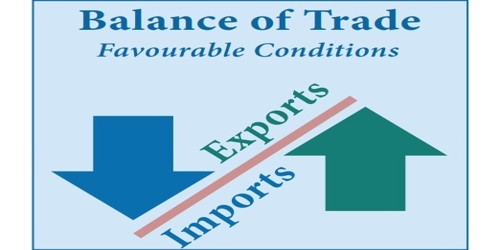
The relationship between stock markets and economic indicators is a vital area of study for investors, economists, and policymakers alike. Economic indicators provide essential data about the overall health of an economy, while stock markets reflect investors' perceptions of future economic performance. Understanding this connection can help individuals make informed investment decisions, guide corporate strategies, and inform public policy.
Understanding Economic Indicators
What Are Economic Indicators?
Economic indicators are statistical metrics that provide insights into the economic performance of a country or region. These indicators can be categorized into three main types:
Leading Indicators: These indicators tend to change before the economy as a whole changes, providing foresight into future economic activity. Examples include stock market returns, new housing starts, and manufacturing orders.
Lagging Indicators: These indicators reflect the economy's historical performance and typically change after the economy has already begun to shift. Examples include unemployment rates and corporate profits.
Coincident Indicators: These indicators move in tandem with the economy, providing real-time insights into economic health. Examples include GDP growth and retail sales.
Importance of Economic Indicators
Economic indicators play a crucial role in assessing the state of the economy. They help businesses make informed decisions, guide investors in their trading strategies, and enable policymakers to formulate economic policies. By analyzing these indicators, stakeholders can identify trends, make forecasts, and mitigate risks.
The Role of Stock Markets

What Are Stock Markets?
Stock markets are platforms where shares of publicly traded companies are bought and sold. They serve as a marketplace for investors to trade ownership in companies and are critical components of the global financial system.
Significance of Stock Markets
Capital Formation: Stock markets provide companies with the ability to raise capital by issuing shares. This capital can be used for expansion, research, and development.
Investment Opportunities: For investors, stock markets represent a venue for generating returns on their investments. Through stock purchases, investors own a piece of the companies and can benefit from capital appreciation and dividends.
Market Sentiment: Stock markets reflect investor sentiment and confidence in the economy. A rising stock market often signals optimism, while a declining market may indicate worry about the future.
Stock Market Performance Metrics
Key metrics used to evaluate stock market performance include:
Indices: Stock market indices such as the S&P 500 and Dow Jones Industrial Average track the performance of a basket of stocks, providing insights into overall market trends.
Market Capitalization: This represents the total value of a company's outstanding shares, used to assess a company's size and maturity.
Price-to-Earnings Ratio: The P/E ratio is a valuation metric that compares a company's share price to its earnings per share. It helps investors determine if a stock is overvalued or undervalued relative to its earnings.
The Connection Between Economic Indicators and Stock Markets
1. Predictive Relationship
One of the most notable aspects of the connection between stock markets and economic indicators is the predictive relationship. Leading economic indicators often signal future movements in stock markets:
Stock Market as a Leading Indicator: The stock market is often seen as a leading indicator of economic performance due to its forward-looking nature. When investors are optimistic about the future, stock prices tend to rise, reflecting expectations of economic growth and corporate profitability.
Economic Indicators Impacting Stock Prices: Positive economic indicators, such as rising GDP, decreasing unemployment rates, and increasing consumer confidence, tend to boost stock prices as investors anticipate better earnings. Conversely, negative indicators can lead to declining stock prices.
2. Market Reactions to Economic Data
Stock markets react dynamically to the release of economic data. Investors continuously analyze economic reports, often adjusting their portfolios based on new information:
Immediate Market Response: Stock prices may react sharply to the release of significant economic data. For example, a lower-than-expected jobs report may lead to a sell-off as investors adjust their expectations for consumer spending and economic growth.
Market Sentiment and Volatility: Economic data can introduce volatility into stock markets. Surprise data, whether positive or negative, may lead to rapid changes in investor sentiment, resulting in fluctuating stock prices.
3. Interest Rates and Monetary Policy
Monetary policy and interest rates play a significant role in the connection between stock markets and economic indicators. Central banks adjust interest rates to control inflation and stimulate or slow economic growth:
Lower Interest Rates: When central banks lower interest rates to stimulate the economy, borrowing costs decrease, encouraging consumer spending and business investment. This environment tends to boost stock prices as companies benefit from increased spending.
Higher Interest Rates: Conversely, when interest rates rise, borrowing costs increase, potentially dampening economic growth. Higher rates can lead to lower stock prices as investors fear reduced consumer spending and corporate profitability.
4. Inflation and Corporate Earnings
Inflation is another critical economic indicator affecting stock markets. Rising inflation can impact corporate earnings, which in turn influences stock prices:
Profit Margins: As input costs rise during inflationary periods, companies may face tighter profit margins. If companies cannot pass on costs to consumers, their profitability may decline, leading to lower stock prices.
Inflation Expectations: Expectations of higher inflation can lead to volatility in stock markets as investors reassess the value of future earnings in real terms. Adjustments in valuation models can shift stock prices significantly.
5. Global Economic Influences
Stock markets are interconnected with global economies, and international economic indicators can also impact domestic stock markets:
Global Supply Chains: Changes in global economic conditions can affect domestic companies that rely on international supply chains. For instance, disruptions in supply chains due to geopolitical tensions can impact stock valuations.
Foreign Market Trends: Economic trends in major economies like the United States, China, and the European Union can influence global stock markets. For example, a slowdown in China may lead to declines in commodity prices, affecting resource-based companies.
Analyzing the Connection: Key Economic Indicators

1. Gross Domestic Product (GDP)
GDP measures the total value of goods and services produced in an economy. It serves as a primary indicator of economic health and directly influences stock markets:
- GDP Growth: High GDP growth rates foster investor confidence, leading to rising stock prices. Conversely, low or negative GDP growth can lead to declines in stock markets.
2. Consumer Confidence Index
The Consumer Confidence Index measures consumers' attitudes about the economy and their financial prospects. It provides valuable insights into future consumer spending:
- Impact on Spending: A positive Consumer Confidence Index typically correlates with increased consumer spending, which drives corporate earnings and, subsequently, stock prices.
3. Unemployment Rate
The unemployment rate provides insights into labor market conditions. A low unemployment rate indicates a strong job market and often correlates with increasing consumer spending:
- Effect on Stock Valuations: A decline in unemployment can boost stock prices as investors anticipate higher consumer spending and overall economic growth.
4. Inflation Rate
The inflation rate is a key economic indicator that measures the general price level of goods and services. This metric influences monetary policy and investor sentiment:
- Managing Inflation Expectations: Central banks monitor inflation closely and may adjust interest rates accordingly. Rising inflation can lead to uncertainty in stock markets as investors react to potential shifts in monetary policy.
5. Retail Sales
Retail sales data reflects consumer spending patterns and provides insights into economic health. Strong retail sales often indicate consumer confidence and drive corporate earnings:
- Link to Stock Prices: Positive retail sales reports can lead to bullish trends in stock markets as investors anticipate better-than-expected earnings from consumer-facing companies.
The Impact of Stock Market Movements on Economic Indicators
1. Wealth Effect
Stock market movements can create a wealth effect where rising stock prices enhance consumer confidence and spending:
- Increased Consumption: As stock prices rise, investors feel richer and may increase their spending, stimulating economic growth. This phenomenon often correlates with positive economic indicators such as GDP growth.
2. Capital Spending
When stock markets perform well, companies may feel more confident in their financial health and increase capital spending:
- Investment in Growth: Companies may invest in new projects, research, and development based on positive market sentiment, contributing to economic expansion and improved economic indicators.
3. Market Sentiment and Business Confidence
Stock market performance can influence business confidence:
- Corporate Investment Decisions: A thriving stock market often leads to greater corporate investment and expansion plans, contributing to job creation and economic growth.
4. Public Perception
Public perception of the economy can be affected by stock market movements:
- Investor Sentiment: Rising stock markets can create a sense of optimism among consumers and investors, which may influence their financial decisions and overall economic confidence.
Conclusion

The connection between stock markets and economic indicators is a complex and dynamic relationship that plays a significant role in shaping economic outcomes. By understanding how economic indicators influence stock prices and vice versa, investors, policymakers, and businesses can navigate the economic landscape more effectively.
While stock markets often react to a wide array of economic data, the predictive nature of these markets reflects investor sentiment and expectations about future economic conditions. For those engaged in investing, economic analysis, or policymaking, staying informed about the interplay between stock markets and economic indicators is essential for making sound decisions and achieving sustainable growth.
As global economies continue to evolve, the connection between stock markets and economic indicators will remain a focal point for understanding and responding to economic challenges and opportunities. Ultimately, a holistic approach that considers both stock market performance and economic indicators can lead to better outcomes for individuals and the broader economy.
Related
-
Financial News

-
Cryptocurrency

-

-
Forex Market

-
Economic Indicators

-
Forex Market

